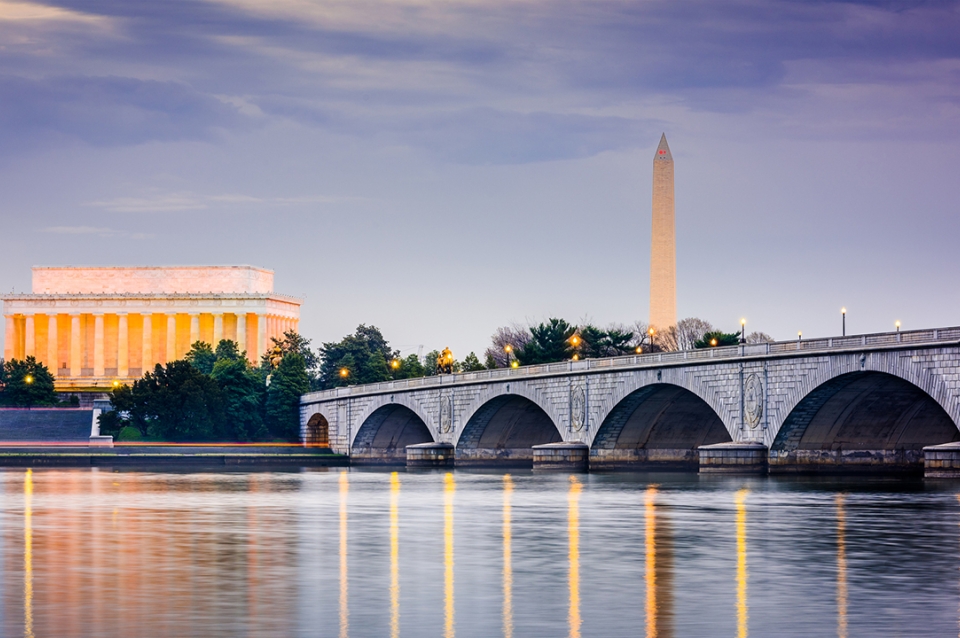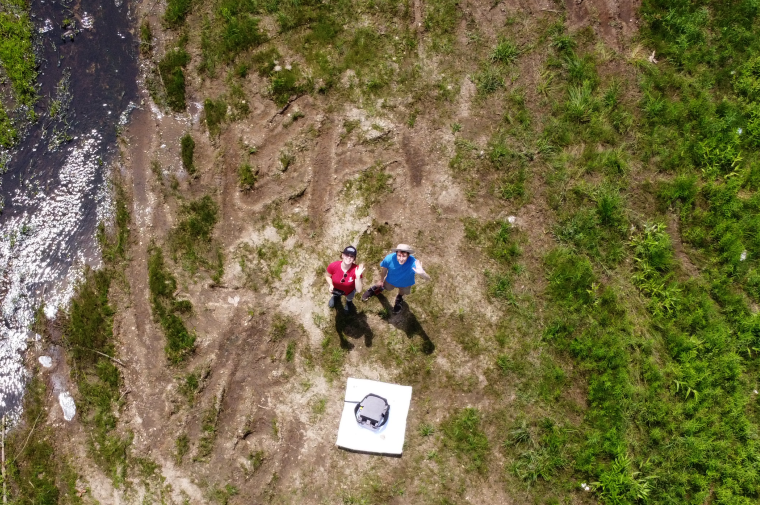August 31, 2020
Stuart Weitzman School of Design
102 Meyerson Hall
210 South 34th Street
Philadelphia, PA 19104
Get the latest Weitzman news in your Inbox
Media Contact
Michael Grant
mrgrant@design.upenn.edu
215.898.2539
Molly Lester (MSHP’12) was in the last semester of her master’s degree in Historic Preservation when she joined an interdisciplinary studio focused on the Civil War Defenses of Washington (CWDW), a series of forts built to defend the nation’s capital during the 1860s. Specifically, she and her fellow students were charged with uniting the 19 forts, all owned by the National Park Service, into something like a coherent cultural landscape. The work earned the students a finalist spot in the Van Alen Institute’s Parks for the People competition. But they didn’t guess that it would have such a long afterlife — or that it would lead to a contract for preservation work at the Lincoln Memorial.
Over the eight years since the studio was completed, a team of researchers at the Weitzman School’s PennPraxis, the consulting and community engagement arm of the School, under the leadership of Associate Professor Randall F. Mason, have completed a series of cultural landscape projects with the National Park Service in Washington, D.C. The projects have included forts as well as public landscapes like Pennsylvania Avenue and Grant Circle, small pocket parks used daily by District residents, and three historic public golf courses owned by the federal government. Now the team is preparing to take on its most high-profile project to date with a contract to create a cultural landscape inventory at the Lincoln Memorial, one of the most visible and visited monuments in D.C. Lester jokes with her former classmates that the 2012 studio will never end.
“The fact that all this started in a studio has really set the tone for how creative we are looking to be with these projects,” says Lester, associate director of the Urban Heritage Project at PennPraxis and project lead for a number of the group’s landscape inventories with the National Park Service. “It’s easy to think they are just standard reports at this point, but … they’re really opportunities to expand how we define history and how we define cultural landscapes.”
Many of these projects include two stages. One is a cultural landscape inventory, which documents the history of the memorial’s design and its use in different historical periods, along with existing conditions at the site and the surrounding areas. The other is a cultural landscape report, which carries a series of recommendations for future changes to the site — incorporating everything from maintenance needs to signage, plantings, and new design changes, Mason says.
“Our studies become the public policies for changing or managing these landscapes,” Mason says. “We’re not trying to put them in amber. It’s really providing guidance for how they should be used and adapted.”
The School’s partnership with the National Park Service has deepened and evolved in the eight years since it began. The cultural landscape inventory and cultural landscape report are the basic deliverables for each project, Mason says, but a few years ago, the team also began incorporating “rapid ethnographic assessments” into each project, which provide a degree of understanding about who uses the spaces in question, how frequently, and in what ways. It isn’t always well understood that these urban spaces are owned by the federal government or managed by the National Park Service, and in some cases, educating users about that relationship is part of the goal. Few people expect that three of the District’s historic golf courses are federal property, for example. Same for many of the small parks in the District, some of which, like Bryce Park, cover little more than half an acre. The cultural landscape work of the Urban Heritage Project has helped illuminate the federal government’s role in creating and maintaining public landscapes for recreation, repose, commemoration and conservation in the capital.
The Lincoln Memorial is a different type of challenge.
“We never really anticipated working on something with such great visibility as the Lincoln Memorial,” Mason says. “But it’s an incredible honor to get to work on it, especially at a point in our national history where even the meaning of these most intensely shared and uncontroversial memorials has become really controversial … That’s where we want to be working. We want to be working on places that are meaningful for others.”
The Lincoln Memorial cultural landscape inventory is being undertaken as part of an environmental impact study for the planned redevelopment of the Long Bridge, a railroad bridge that crosses the Potomac River. The memorial is part of the 1.8-square-mile study area for the project. Other cultural landscapes in the area include East Potomac Park, West Potomac Park, and the George Mason Memorial in Washington, D.C., as well as the Lyndon B. Johnson Memorial Grove and Mount Vernon Memorial Highway in Virginia, says Julie McGilvray, the preservation services program manager at the National Park Service. The projects need to be completed on a tight timeline—around eight months—and McGilvray says she chose the PennPraxis team to complete the Lincoln Memorial study based on its track record with previous projects. As one of the most visible monuments in the District, the Lincoln Memorial’s relationship to adjacent monuments, and the viewsheds to and from the memorial itself, are critical, she says. Work at the Long Bridge may have an impact on those views.
“D.C. is built in these iterations,” McGilvray says. “There are different plans that have been developed and built over time that overlay each other, and understanding the relation to the memorials is part of that. The way D.C. was laid out, the Lincoln Memorial and its relationship to the Mall and all of the monuments at the Mall, and its relationship to the river and that interface is all very important.”
For the Lincoln Memorial project, Jacob Torkelson (MSHP’19), a researcher for the Urban Heritage Project, will be conducting the bulk of the archival and field research, with Lester serving as project manager. Because of their experience with previous National Park Service projects in the capital, Lester says, the method of research is fairly well established. And the team’s accumulation of knowledge about D.C.’s cultural landscapes has helped to make each successive project richer. But there will be new challenges, too, that come with working on a site as iconic and highly trafficked as the Lincoln Memorial.
“The stakes are high to get this right and to do justice to this site that has national and arguably international significance,” Lester says.


 Expand Image
Expand Image



